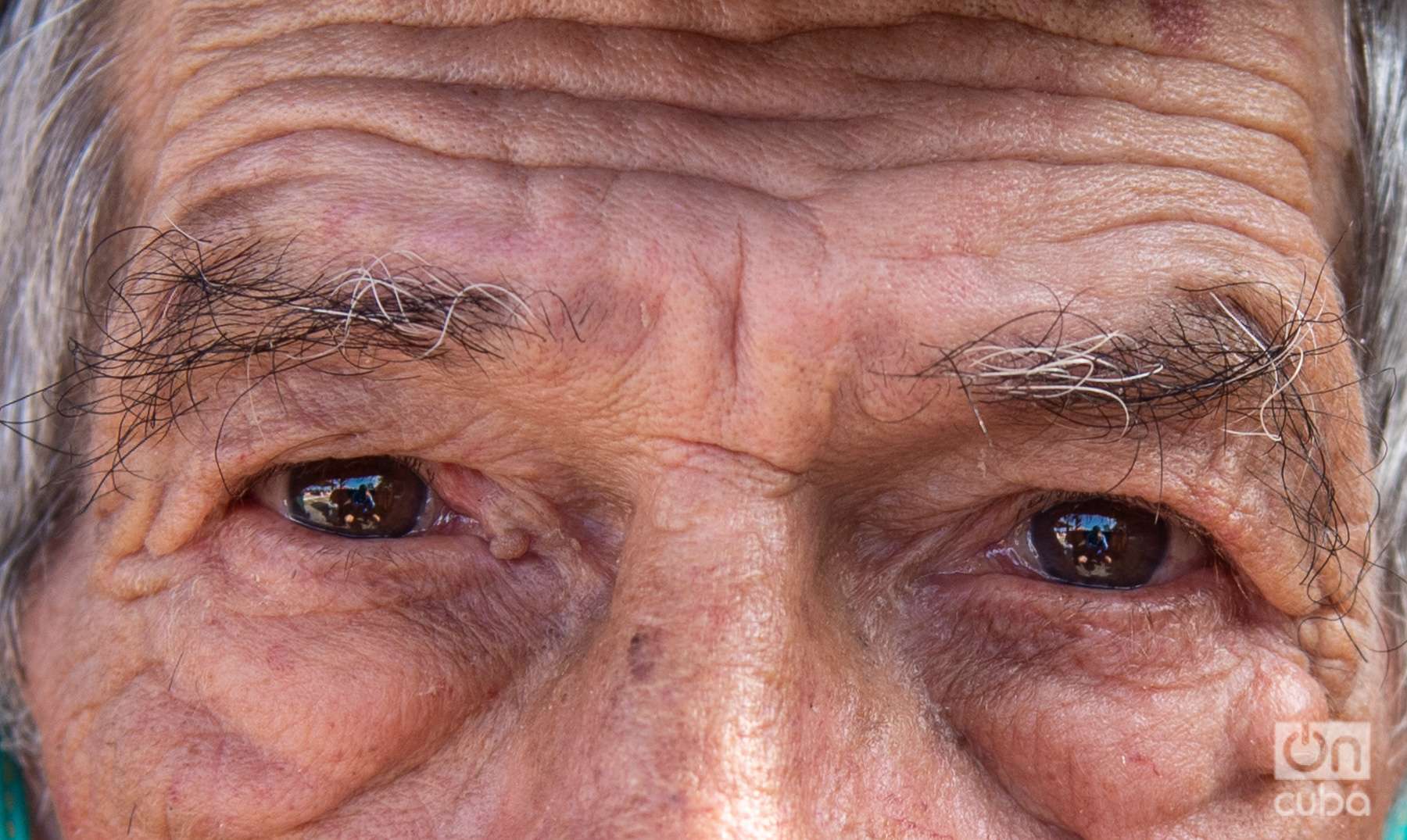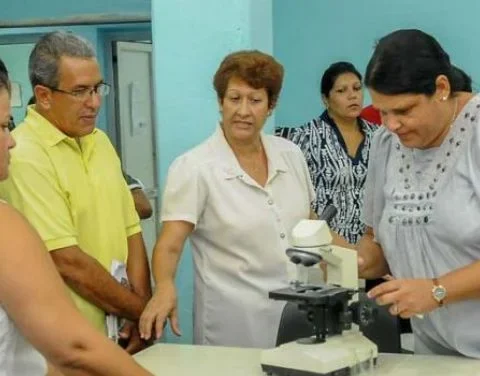We all want to live longer. However, a long life without quality is not desirable. Among the greatest enemies of that aspiration is Alzheimer’s disease.
Its terrible consequences have made it perhaps the most famous neurodegenerative pathology. So much so that the inevitable wit of the Cuban blames “the German” for any minor and momentary failure of memory. On the other hand, it is common for perfectly healthy people to jokingly say: “Today my German is perfect” when any of the above situations occurs.
Jokes aside, there are many who are rightly afraid of the terrible disease. However, beyond the generalities, little is known and less is said about this form of dementia and its impact on global and Cuban health.
In the next few lines I will talk about Alzheimer’s disease. I will start by explaining what dementias are in a general sense and this one in particular; why they occur; at what point is the search for drugs that are capable of preventing, stopping or, eventually, curing it.
Story of an eponym 1
“Sitting on the bed, eyes full of anguish.” This is how the neuropathologist described in his first note, alois alzheimer Auguste Deter, the first known patient to have this form of dementia. She was a 52-year-old woman who was referred by her doctor for “serious memory problems, as well as insomnia.”
At the time of that famous consultation, Deter was confused and restless, she was haunted by the idea that her husband was having relations with a neighbor and, sometimes, “he no longer recognizes her.” At the time, Dr. Alzheimer was a respected physician, considered an authority on what we would now call neurosyphilis.
In any case, Deter’s case caught his attention and four years later, upon learning of his death, he asked that his brain be sent to him —which is preserved— for study. The findings were surprising: a considerable decrease in the number of neurons and the presence of “strange tangles and protein deposits”, which did not fit in any case known up to that moment.
Alzheimer finds similar characteristics in four other patients and publishes its results. your boss and friend emil kraepelinin the eighth edition of the Handbook of psychiatric illnesses, describes the eponymous disease, accurately describing it, as “a very severe variant” of senile dementia.
This is how Alzheimer’s disease, “the terrible German”, which scares Cubans so much, arose for the history of medicine.
The illness
Alzheimer’s it’s responsible by 60-80% of dementia cases, a general term applied to loss of memory and other cognitive abilities that interfere with daily life. Alzheimer’s is not a normal feature of aging and is twice as common in women as in men, partly because they have a longer life expectancy. Although the most important known risk factor is increasing age. Since most people with Alzheimer’s are older than 65 years. Approximately 200,000 Americans under the age of 65 have early-onset Alzheimer’s.
It is a progressive condition, the symptoms gradually worsen. In its final stages, the patient loses the ability to hold a conversation and respond to the environment. Life time after diagnosis ranges from four to twenty years, depending on age and other previous health conditions.
What causes Alzheimer’s disease?
The disease originates predominantly genetic. At least 5 genetic loci 2 Different, located on chromosomes 1, 12, 14, 19 and 21, influence the onset and progression of the disease.
Mutations in some specific genes can lead to forms of Alzheimer’s disease with presenile onset. However, the main cause of the disease is Beta-amyloid plaques, described by Alzheimer’s more than a century ago.
Beta-amyloid can alter the activity of several proteins that over time lead to changes in Tau proteins and lead to the formation of neurofibrillary tangles.
Beta-amyloid deposition and neurofibrillary tangles leads to loss of communication between neurons. This causes the brain to “shrink” in the affected areas.
The call amyloid hypothesis postulates that the progressive accumulation of these substances triggers a sequence of events that ends with the death of the neurons, the loss of contact between them and neurotransmitter deficits, that is, the substances responsible for transmitting information in the brain. All this causes the clinical symptoms of the disease.
On the other hand, high blood pressure, diabetes, disorders related to cholesterol and blood fats, and smoking can increase the risk of Alzheimer’s disease. Adequate monitoring and control of these factors can mitigate the risk of developing cognitive impairment in advanced age.
Symptoms
He symptom The most common early stage is difficulty remembering newly learned information. It happens because the changes caused by the disease usually start in the part of the brain that affects learning.
Progressively, these symptoms worsen and others are added, such as disorientation; changes in mood and behavior; escalating confusion regarding events, times, and places; unfounded suspicions about family, friends and caregivers; memory loss and more severe behavior changes.
In the final stages there is difficulty speaking, swallowing, and walking. This greatly affects people’s quality of life and can eventually lead to death.
Diagnosis
The definitive diagnosis of Alzheimer’s disease can only be confirmed by histological evaluation of brain tissue, which is enormously complex. However, with careful questioning and a good physical examination, a diagnosis can be reached with a level of certainty close to 85%.
Among the elements that have traditionally been established as diagnostic criteria are:
- the presence of a dementia established through a formal examination of the patient’s mental status.
- Deficits in two or more areas of cognition, these include: attention, orientation, memory, executive functions, language…
- Gradual onset and progressive worsening.
- That there are no disorders of consciousness, that is, that the patient maintains the ability to relate to his environment, although with the difficulties of the disease.
- Onset after the age of 40, usually after age 65.
- That there is no other cause that explains the symptoms such as a tumor, a cerebrovascular accident…
In some cases, especially in patients with mixed type dementias, the lack of any of these criteria does not exclude the disease. On the other hand, there are also laboratory and neuroimaging studies, such as CT scans, Magnetic Resonance, etc… which, due to how expensive they are, are not available to everyone, even in high-income countries. That is why the guidelines for the diagnosis of the disease do not include them.
Treatment and prognosis
Symptomatic and safety measures: People with the condition should ideally live in a bright, happy, and familiar environment; designed to reinforce orientation. In that sense, large clocks and calendars in the room are useful. In addition, measures must be implemented to ensure patient safety, in order to avoid accidents.
Support measures for caregivers: Assistance to caregivers, who may experience significant stress, is important. Likewise, symptoms of exhaustion should be watched.
Drugs: A number of drugs have been approved that modestly improve cognitive function and memory in some patients. Their names are: donepezilthe rivastigmine and the galantamine. A fourth drug, tacrine, is rarely used because it causes liver damage. The doses and frequencies of these drugs must be decided by specialists depending on the stage in which the patient is.
In addition, there are a number of medications that must be used With precaution in patients with Alzheimer’s; that is, after carefully weighing the risk/benefit ratio and always on the advice of an expert. Among them we have: anxiety medications, anticonvulsants and antipsychotics.
In these patients, the anticholinergics, a very broad group of drugs. Medications such as amitriptyline, those used in allergies, etc., are also associated with this type of action. These drugs make symptoms worse and increase the risk of accidents.
Future perspectives
For the vice president of the Spanish Society of Psychiatry, Martín Carrasco, author of the book Alzheimer’s. Guide to understanding and living with the disease (Amat Editorial), in the short term there is no prospects for cure. According to Carrasco, in the 90s much progress was made in understanding the disease and some medicines were developed. But the results have not been what was expected.
two promising investigative horizons What constitutes gene therapy, which would consist of inserting genes into the DNA chain or rewriting the genetic code of people, which currently seems distant for science. Treatments to reduce the accumulation of Beta-amyloid protein and TAU related to the appearance of symptoms seem to be more within reach.
Alzheimer’s in Cuba
In Cuba, currently they live 160 thousand people with some type of dementia. If we are guided by global disease incidence statistics, between 60 and 80% of these patients are affected by Alzheimer’s.
In our country, a clinical trial with a nationally produced drug for the treatment of mild or moderate Alzheimer’s. This medicine, NeuroEPOalready has the authorization of the Cuban regulatory agency and will be tested alone and together with another of the internationally accepted preparations for the treatment of this condition.
However, as encouraging as this news is, in Cuba, as in the rest of the world, in the near future the main lines of approach to the disease should be:
- Sensitization, information and awareness with the aim of transforming society’s perception of Alzheimer’s, increasing its degree of knowledge and acceptance.
- Prevention and diagnosis: promote early, accurate and timely diagnosis of Alzheimer’s.
- Improvement in the social consideration of the disease and those affected: progress in services, supports, benefits and aids that prevent situations of overload and stress for caregivers and make it possible for the patient to stay in their natural environment for as long as possible.
- Research, innovation and knowledge: promote biomedical, social and health research on Alzheimer’s.
Fifty million people live in the world with this disease, which is one of the main causes of death in countries with high levels of development. There’s still much to do.
Note:
1 What gives a name to something, in this case, Dr. Alzheimer gave his name to this form of dementia.
2 A locus, in genomics, is a physical site or location in a genome (such as a gene or other segment of DNA of interest), something like an address. The plural of locus is loci.
















